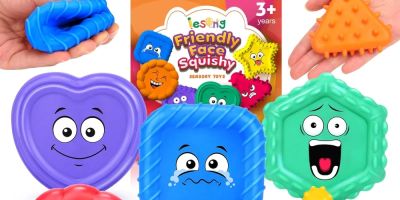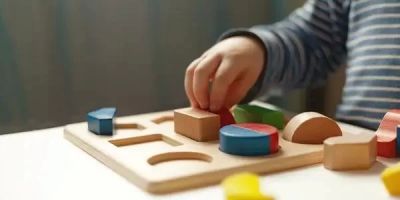- 1-Why-Choose-Wooden-Toys-Guide-to-Buying-the-Best-Wooden-Toys
- 2-Material-Quality-and-Safety-Standards
- 3-Design-and-Educational-Value
- 4-Durability-and-Sustainability
- 5-Personalized-Recommendations-for-Buyers
1. Why Choose Wooden Toys: Guide to Buying the Best Wooden Toys
When it comes to selecting toys that are both engaging and safe for children, wooden toys stand out for their timeless appeal and numerous benefits. Unlike plastic alternatives, wooden toys offer a tactile and natural experience that encourages creativity and imaginative play. Understanding how to buy the best wooden toys is essential for parents and gift buyers who value quality, sustainability, and educational value.
The charm of wooden toys lies not only in their aesthetic but also in their durability and eco-friendly nature. Many parents today seek toys that can last through multiple childhood stages or even generations, which makes investing in high-quality wooden toys a smart choice. This guide will explore key considerations, ensuring you make informed decisions while shopping for these classic playthings.
1.1 The Growing Popularity of Wooden Toys
In recent years, wooden toys have surged in popularity due to increased awareness of environmental issues and the desire for non-toxic, safe toys. Social media stories often highlight families switching from plastic to wooden toys for sustainability reasons, with many noting how children develop better fine motor skills and focus with these tactile toys. These trends make the topic of buying wooden toys more relevant than ever.
2. Material Quality and Safety Standards
The foundation of purchasing the best wooden toys begins with understanding the materials and safety standards involved. Not all wooden toys are created equal—some use high-quality hardwoods like maple or beech, while others rely on softwoods that may be less durable. Always prioritize toys made from sustainably sourced wood and finished with non-toxic, water-based paints or natural oils.
Safety certifications, such as ASTM F963 in the United States or EN71 in Europe, are critical indicators of a toy's safety. These standards ensure toys have been rigorously tested for harmful substances, choking hazards, and durability. For example, a well-known case involved a recall of certain imported wooden toys due to lead paint, which underscores the importance of buying from reputable sellers who adhere to strict regulations.
2.1 How to Identify Safe Wooden Toys
Look for clear labeling on packaging and product descriptions about the materials used and certifications obtained. Trusted brands often provide transparency about their sourcing and manufacturing processes, which helps build buyer confidence. Shopping from specialized retailers such as Knight Toys ensures access to well-vetted, high-quality wooden toys that meet safety standards.
3. Design and Educational Value
The design of wooden toys is more than just visual appeal—it directly affects a child’s development. The best wooden toys stimulate imagination, problem-solving skills, and fine motor coordination. Classic examples include wooden blocks, puzzles, and stacking toys that encourage creativity and logical thinking.
Consider toys that grow with your child, such as modular playsets or construction kits that can be assembled in multiple ways. Stories from parents often highlight how their children became deeply engaged in learning through play with thoughtfully designed wooden toys. These experiences emphasize that a toy’s educational value is just as important as its physical quality.
3.1 Case Study: The Montessori Influence
Many wooden toys are inspired by Montessori principles, which promote hands-on learning and self-directed activity. Montessori educators often recommend wooden toys for their simplicity and natural feel, which align perfectly with their pedagogical goals. For instance, a wooden shape sorter not only entertains but also helps toddlers recognize shapes and colors, providing layered educational benefits.
4. Durability and Sustainability
Wooden toys are generally known for their longevity, but durability varies widely based on craftsmanship and wood type. Investing in sturdy wooden toys means they can be passed down through siblings or even generations, offering better value over time compared to mass-produced plastic toys that break easily.
Sustainability is another vital factor in choosing wooden toys. Responsible brands prioritize forest-friendly practices and minimal environmental impact during production. Choosing sustainable wooden toys supports global efforts to reduce plastic waste and preserve natural resources. Knight Toys offers a curated selection of eco-conscious products, helping customers make choices that align with these values.
4.1 Real-World Impact of Choosing Sustainable Toys
One inspiring example comes from a family who switched all their children’s toys to sustainable wooden options and documented the reduction in plastic waste in their household. Their story, widely shared online, has encouraged many others to rethink their purchasing habits and choose greener alternatives.
5. Personalized Recommendations for Buyers
Buying the best wooden toys requires matching the toy to the child’s age, interests, and developmental stage. For infants, toys that focus on sensory stimulation and safe chewing surfaces are ideal. Preschoolers benefit from toys that challenge their problem-solving abilities, while older children enjoy more complex construction kits or role-play sets.
Knowing where to find a diverse range of high-quality wooden toys makes the shopping process easier. Knight Toys provides expert guidance and a wide selection tailored to different needs, ensuring buyers can find toys that balance fun, learning, and safety perfectly.
5.1 Tips for Choosing Wooden Toys Online
When purchasing wooden toys online, carefully read product descriptions, check customer reviews, and verify seller reputation. Avoid deals that seem too good to be true, as cheap wooden toys may compromise on safety or quality. Consulting websites that specialize in wooden toys, such as Knight Toys, can streamline this process and provide peace of mind.





